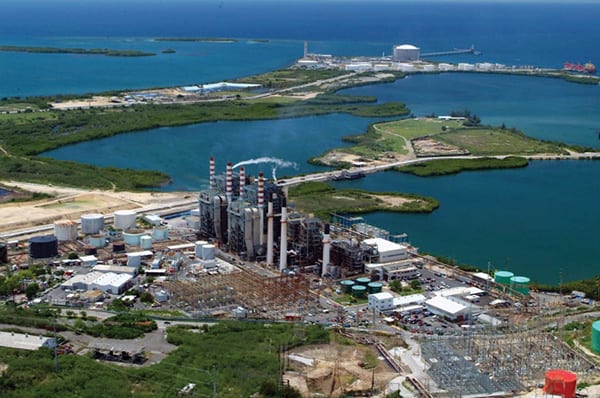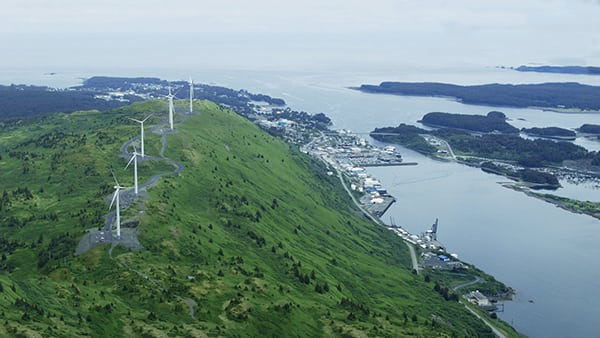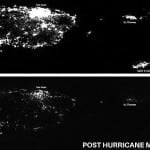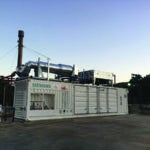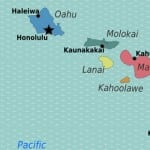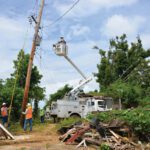Largely dependent on imported fuel oil, many island systems must grapple with soaring electricity costs and reliability issues, in part because they are isolated and they don’t benefit from economies of scale. But some nations are seeking alternatives.
It’s the same story all over the world. To fuel their economies and support growing populations, geographically isolated islands big and small procured fuel oil generators and developed a dependence on diesel delivery barges while crude was relatively stable. But as oil prices soared—hitting a record high in July 2008—nations like the Marshall Islands, the Bahamas, Jamaica, and Mauritius were forced to declare economic emergencies or admit that their vulnerability to oil price and currency exchange fluctuations could prove economically devastating.
Fuel imports are generally blamed for the exorbitant prices many islanders pay for power, but experts also point to size—which limits economies of scale—and the islands’ geographic isolation.
The U.S. territories face higher energy costs than the rest of the nation, for example. In those territories, the average residential rate for electricity is about $0.37/kWh—about three times higher than the U.S. national average cost of electricity. Comparatively, the Caribbean regional average is $0.33/kWh, while Pacific island nations pay between $0.28/kWh (Palau) and $0.48/kWh (the Federated States of Micronesia).
Larger islands, which boast high electrification rates, are often plagued by more complex energy needs, as in Puerto Rico’s case (see sidebar, “Drowning in Debt: Puerto Rico’s Story”).
Renewables: An Obvious Choice, but Not Without Challenges
To combat the high cost of electricity, a number of island nations or territories are seeking alternatives. Because they are blessed with solar, wind, biomass, and marine resources but bereft of fossil fuels, making renewables a key component in island nation power profiles would seem a given. There is tremendous interest in adopting renewables. However, a number of obstacles limit their widespread use.
The foremost reason is cost. Guam, for instance, uses a hefty chunk of gross domestic product to import fuel for transportation and power needs and must rely on assistance to build new projects. But as Esther Kia’aina, assistant secretary for the Department of Energy’s Insular Areas office, told lawmakers at a congressional hearing this July, high-priority projects slated for some U.S. territories must be supplemented with funding from the Office of Insular Affairs’ capital improvement program and technical assistance programs, and these “are already stretched thin.” Notable federally funded projects include a $1.8 million project to install a 1.2-MW solar power system by the American Samoa Power Authority and a $2 million wind turbine pilot project in Guam.
Sometimes, renewables are kept at bay to protect another sector. Hawaii, which spends $5 billion on oil for its energy needs and suffers the highest energy costs among the 50 states, first moved to integrate renewables when the price of oil during the Arab oil embargo in the early 1970s made dependence on oil an economic liability. However, it took more than 30 years for plans to become actionable policies.
“There was considerable inertia from Hawaii’s historic reliance and interdependence on petroleum as the predominant fuel in all sectors,” said Mark Glick, who is the state energy administrator for the Department of Business, Economic Development, and Tourism. “This was due to the knowledge that downward pressure on petroleum demand in Hawaii’s small energy market would adversely affect the delicate product balance of the two local refiners supplying jet fuel, gasoline, diesel, and low-sulfur fuel oil.”
The urgency for more energy security created momentum for change. Today, Hawaii has pledged to produce 30% of its power with renewables by 2020, 70% by 2040, and 100% by 2045. As of January 2015, the renewable portfolio had topped 21%, way ahead of the interim target of 15% (Figure 2).
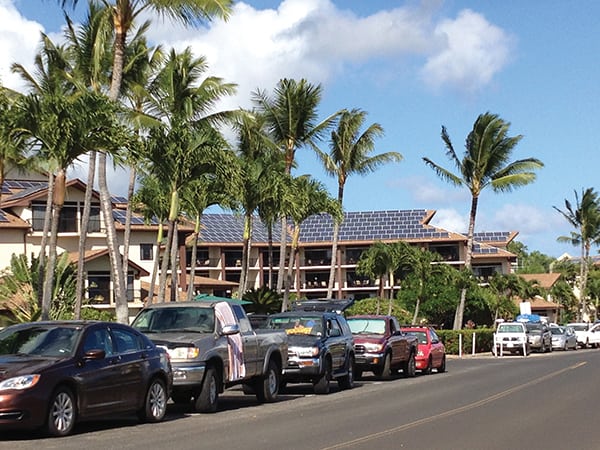
|
| 2. Going renewable all the way. In 2014, 21% of the power used by customers of Hawaiian electric companies came from renewable energy resources, including wind, solid waste, geothermal, hydro, solar, and biofuel energy. The state wants to produce 100% of its power from renewables by 2045. Source: POWER/Gail Reitenbach |
Grid stability concerns also bar some islands from installing larger-scale renewable projects. As some experts point out, many island networks are aging, making them prone to high system losses, and the generating assets they depend on may have been installed more than two decades ago. The U.S. Department of Energy’s March-released “Islands Playbook”—an action-oriented guide (available at http://goo.gl/CIq8OL) to successfully complete a transition to an energy system that eliminates dependence on imported fuels—recommends getting help from experts to overcome integration challenges. That document also highlights Hawaii’s progress on the distributed generation front and regards its island system as a unique laboratory for new solutions.
Hawaii leads the nation in the adoption of distributed solar. While the national average is less than 1%, Oahu leads with 12%, Maui has 10%, Hawaii Island has 9%, and Kauai has 7.3%. “The result of this unprecedented growth in solar is that one-third, or 136 of Hawaiian Electric Co.’s 416 circuits in Oahu are said to exceed 120% of daytime minimum load, with 10% exceeding 250%,” Glick said. “At 250%, that means that on any given day, there is 2.5 times the amount of electrical generation capacity on a circuit at certain times of the day than the minimum load requirements.”
Remember, Glick said, Hawaii’s grid is isolated, which makes the rates of renewable penetration even more impressive. “Consequently, often at the firm prodding of the Hawaii Public Utilities Commission and other energy stakeholders, Hawaii’s utilities have had to act in real time to propose, deploy, and confirm solutions for integrating such high levels of renewables.”
Strategies deployed by the Hawaiian Electric Co. include testing and working on specifications of “fast trip” inverter functionality to avoid transient overvoltage events; computer modeling each individual distribution circuit to determine proactively the distributed generation resource’s “hosting capacity”; and working with inverter manufacturers to bring to market advanced inverter functionality to manage voltage levels. “Planning of systemic change,” energy efficiency, and demand response are all also playing crucial roles with respect to integration of more renewable energy, Glick noted.
Mulling the LNG Option
Diversification of island power portfolios may also be achieved with the integration of natural gas, the U.S. Energy Information Administration (EIA) has suggested.
Liquefied natural gas (LNG), the EIA noted in an August 2014 article, has not been an option for many islands because it is typically shipped in bulk carriers in quantities far too large for island economies to absorb. And, LNG requires expensive regasification and distribution infrastructure. However, the development of standardized cryogenic shipping containers means small amounts of LNG can now be trucked, railed, and shipped like other cargo. Once received by ship, the LNG can be connected to portable regasification units adjacent to electric power plants or industrial facilities.
Puerto Rico and Hawaii are separately testing the economics of small-scale LNG imports, evaluating whether LNG prices justify switching away from diesel and residual fuel oils.
But though the concept seemingly has the backing of international financial institutions like the International Development Bank, experts warn it has a glaring disadvantage: LNG is currently slightly less expensive than diesel, but it is much more price volatile. Also, LNG prices are set regionally and are sensitive to volumes under contract. That would mean some islands may not be able to secure smaller amounts of LNG at competitive prices.
Propane Power Sparks Interest
For a couple of islands, at least, propane has proven the best alternative.
While the U.S. Virgin Islands is typically recognized for its pristine white sands and azure waters, the group of Caribbean islets has become an energy trailblazer, particularly among the U.S. territories.
In September 2011, wholly dependent on fuel oil to generate power, and at the mercy of wide fluctuations in fuel oil prices (in 2003, the price per barrel was about $22, but by 2014 it was about $131), the U.S. Virgin Islands, along with other U.S. territories, drew up an energy roadmap. Its goal: Reduce dependence on fuel oil by 60% by 2025.
Within four years, the Virgin Islands Water and Power Authority (WAPA) had achieved a 20% reduction in fossil fuel energy consumption by implementing several renewable energy and energy efficiency initiatives. These include 8.2 MW of solar through partnerships with Toshiba International Corp. and Mainstreet Power Co. At least 9 MW of new solar is in the pipeline, along with a 7-MW anaerobic digester facility that will be built by Tibbar Energy. The efforts have pushed down residential power rates from $0.51/kWh to about $0.33/kWh today.
However, it was WAPA’s deal with Swiss-based, Dutch-owned multinational company VITOL Group in the summer of 2013 to convert all of its combustion turbines to burn lower-cost and cleaner-burning liquefied petroleum gas (LPG) along with No. 2 fuel oil that has seemingly sparked the most interest. The ambitious conversion of seven General Electric turbines requires the installation of 18 propane storage tanks (Figure 3) along with infrastructure adjustments to enable the safe transportation of LPG vessels. It is expected to reduce WAPA’s fuel costs by 30%.
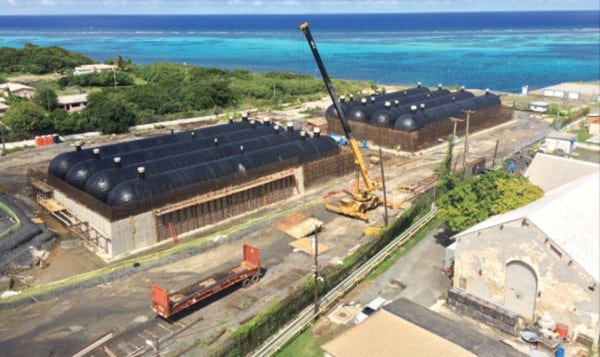
|
| 3. Propelled by propane. The U.S. Virgin Islands, which was wholly dependent on fuel oil just a few years ago, is moving to use propane as the primary fuel source for power generation. This image shows eight propane storage tanks, which will eventually hold effective supply for about 19 days (10,400 cubic meters), positioned for permanent installation on St. Croix Island. Courtesy: U.S. Virgin Islands Water and Power Authority |
According to WAPA Executive Director Hugo V. Hodge Jr., the project has not been without its challenges. Costs have increased from $87 million to $150 million, owing to a number of factors. During early phases of the project, for example, adverse weather posed delays, while undocumented soil conditions and other underground obstacles “presented unforeseen challenges,” he said in a recent statement.
In spite of cost increases, the project has become a model for the Caribbean region. “For most Caribbean islands, converting to the use of propane as the primary fuel source for power generation represents the best, near-term option to significantly reduce the cost of fuel… while ensuring widespread economic benefits,” Hodge said. “The entire region is looking at WAPA’s project intently to see how the model can be adapted in their respective areas.”
The concept is making waves stateside, too. Capstone Turbine Corp. in December 2011 installed 23 propane microturbines on Catalina Island, 26 miles off the southern California coast. “What the Capstone microturbines are doing for Southern California Edison on Catalina Island is allowing us to meet the island electrical demand and frequency moment by moment, perfectly,” said Ronald Hite, a Southern California Edison district manager. What prompted the switch from historically used diesel internal combustion engines are new air quality standards, Hite explained. The new standards would have required the company to install selective catalytic reduction (SCR) units on the diesel engines, which then limited their output. “We needed to bring in some form of generation that is quickly and easily dispatched in small increments,” he said. Propane is brought to the island twice a week by barge that fills the storage tanks; the propane is vaporized before it is fed to the microturbines, Hite added.
Cleaner Diesel Engines
While change is clearly afoot on the island scene (see sidebar, “Beyone Diesel”), diesel engines aren’t going to fade into oblivion anytime soon. They are the generator of choice for larger installations.
|
Beyond Diesel
Here are some more innovative ways islanders are generating power while rejecting costly diesel imports: ■ Remote villages in the Pacific island nations of Timor-Leste and the Solomon Islands are using locally harvested and processed coconut oil to fuel two Caterpillar Olympian generators supplied by Australian specialized Cat engine dealer Energy Power Systems Australia in 2013. Developers say a small system can provide power with an average usage of only three coconuts per kWh—with virtually no emissions. ■ The 11-MW Kaféate wind farm on the Pacific island of New Caledonia has 42 Vergnet anti-cyclone wind turbines. In the event of a cyclone, the tower can be tilted and attached to the ground in order to protect the turbine. ■ Kodiak Island (Figure 5) in southern Alaska this May began producing 99.7% of its power using only wind and hydro, eliminating imports of about 3 million gallons of diesel a year. The 28-MW island system uses two 1.5-MW battery systems to help manage intermittencies. Plans are under way for a crane upgrade at the port and for installation of an ABB integrated commercial flywheel technology to enable the addition of more renewable energy from an expansion at the 9-MW wind farm.
■ Since 2009, the Réunion Island University, the Réunion Island Local Authorities, and DCNS have worked toward the deployment of ocean thermal energy conversion (OTEC) technology in tropical regions by constructing a non-experimental OTEC plant in Réunion. |
Wärtsilä recently made a deal to extend the six-unit Pockwood Pond Power Generating Station in the British Virgin Islands with two gensets running on light fuel oil. When completed in late 2016, the 50-MW plant located on the main island of Tortola will supply 100% of the British Virgin Island’s electricity, including for its 11 islets (via submarine cables).
Meanwhile, MAN Diesel & Turbo in June 2015 officially inaugurated a 210-MW engine-operated power plant on the Caribbean island of Guadeloupe for French utility EDF (Figure 4).
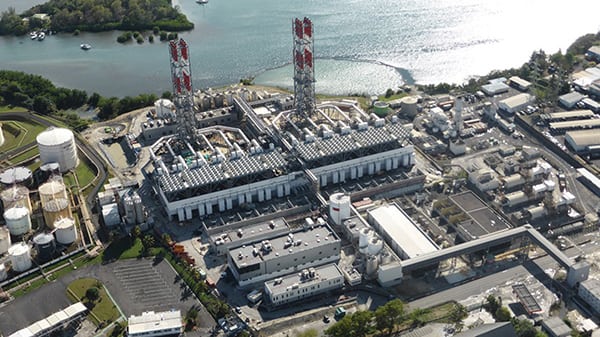
|
| 4. State-of-the-art diesel power. The 210-MW Pointe Jarry power station handed over to French utility EDF by MAN Diesel & Turbo on the Caribbean Island of Guadeloupe this June comprises a dozen 18V48/60 engines. It replaces a 30-year-old plant—cutting fuel consumption by 15% and nitrogen oxide emissions by 85%—and is large enough to cover 45% of the island’s energy needs. Courtesy: MAN Diesel & Turbo |
Since 2008, MAN Diesel has commissioned similar plants (though on a smaller 18.5-MW scale) on La Réunion, Corsica, and Martinique islands for EDF. The newly inaugurated Point Jarry plant on Guadeloupe Island isn’t your run-of-the-mill diesel installation, noted Dr. Hermann Kröger, head of MAN’s power plants business unit, in a statement. “The plant achieves a technical and environmental standard that is seldom seen in the field of diesel power stations,” he said. “SCR catalytic converter technology and urea injection deliver significantly reduced toxic emissions, while the dedicated seawater desalination plant allows 700,000 tonnes of valuable drinking water to be saved every year.”
Significantly, the plant will provide baseload power to the island that is remarkably outfitted with renewable installations. Wind, geothermal, solar, and bagasse produce about 17% of the island’s total power. French law requires EDF to buy power from any interconnected renewable generator, but owing to concerns about grid stability and the variability of renewable sources, it restricts the amount of wind and solar supplying the grid at any given instant. For EDF, having backup power is imperative. ■
—Sonal Patel is a POWER associate editor.


